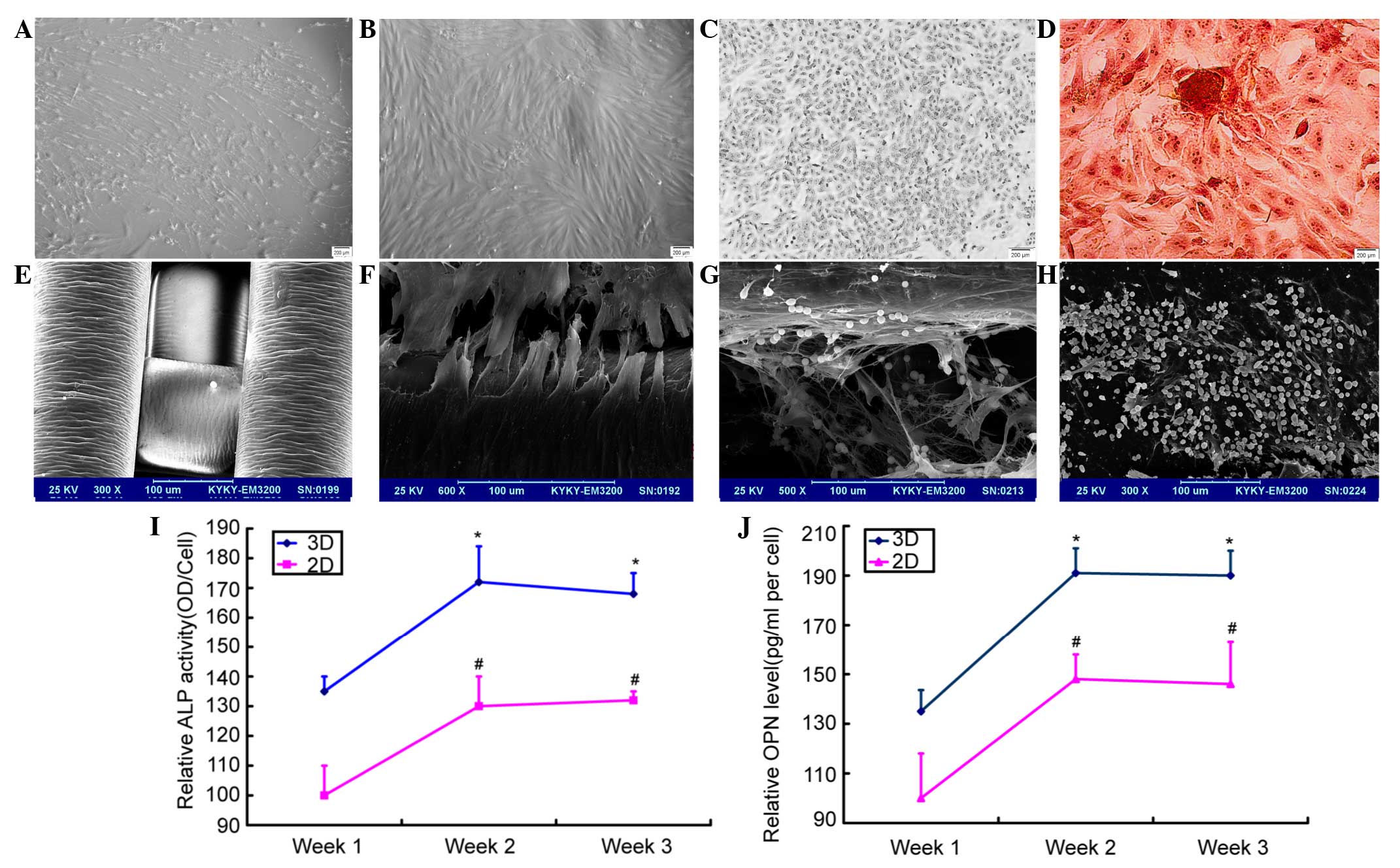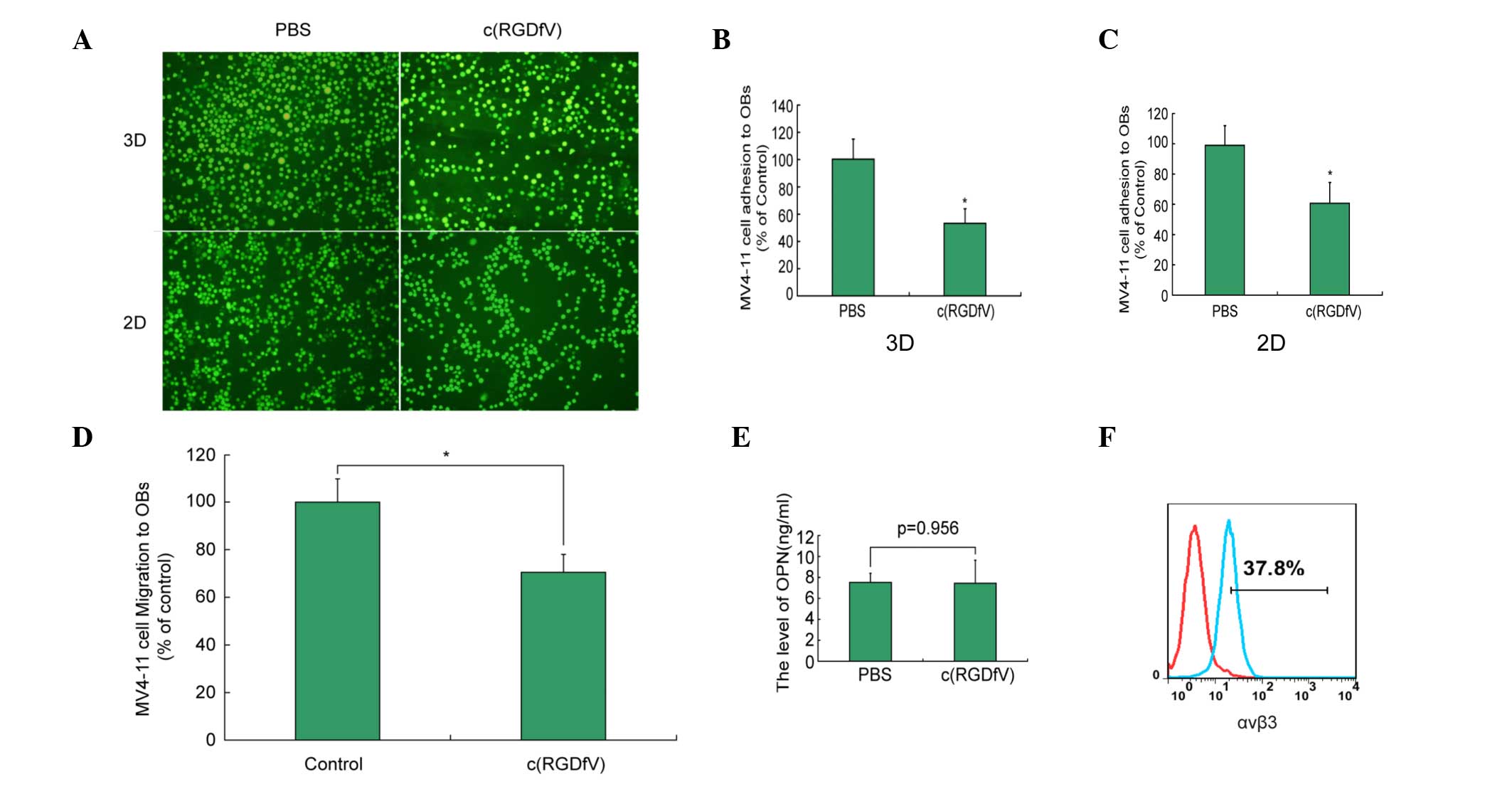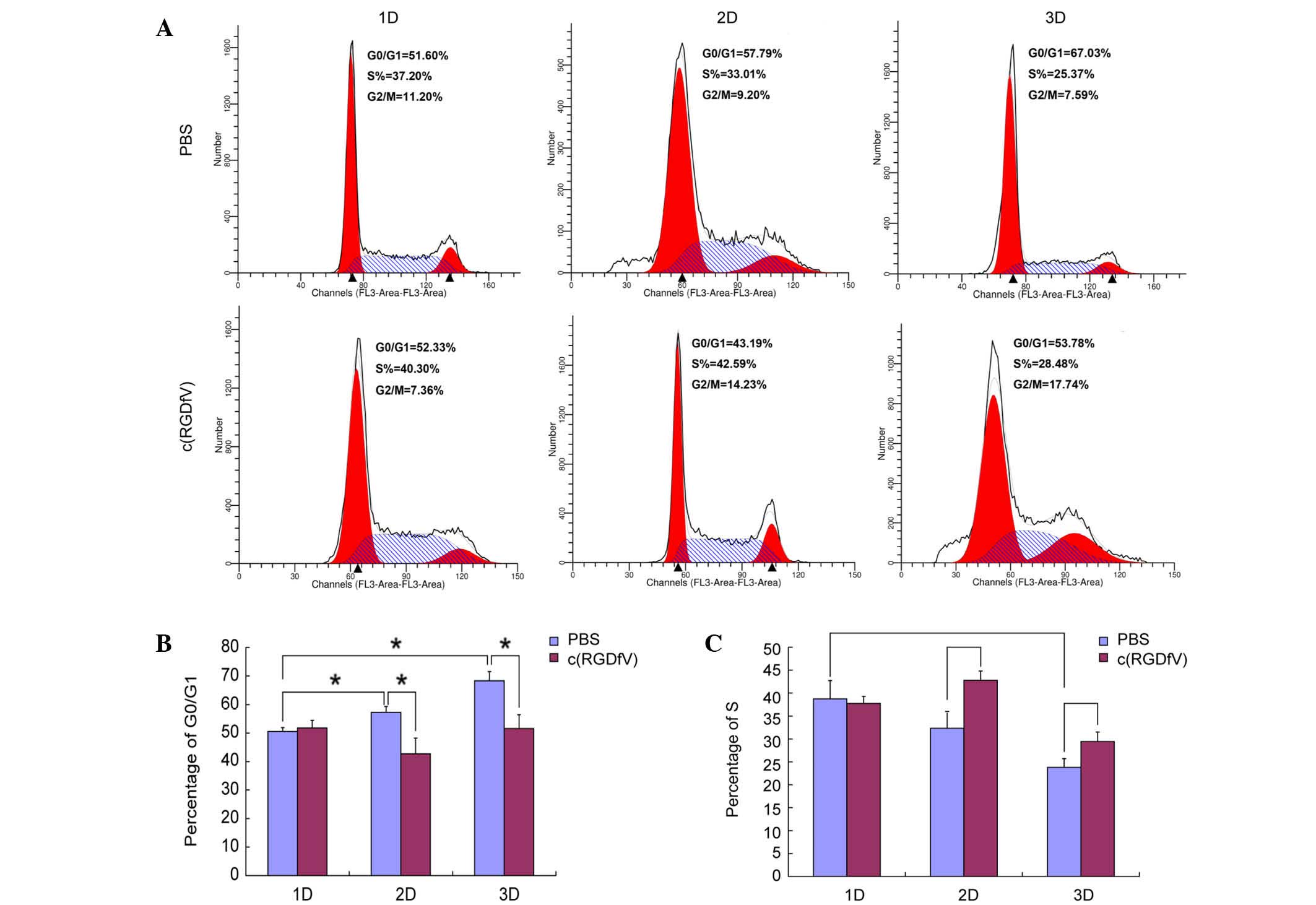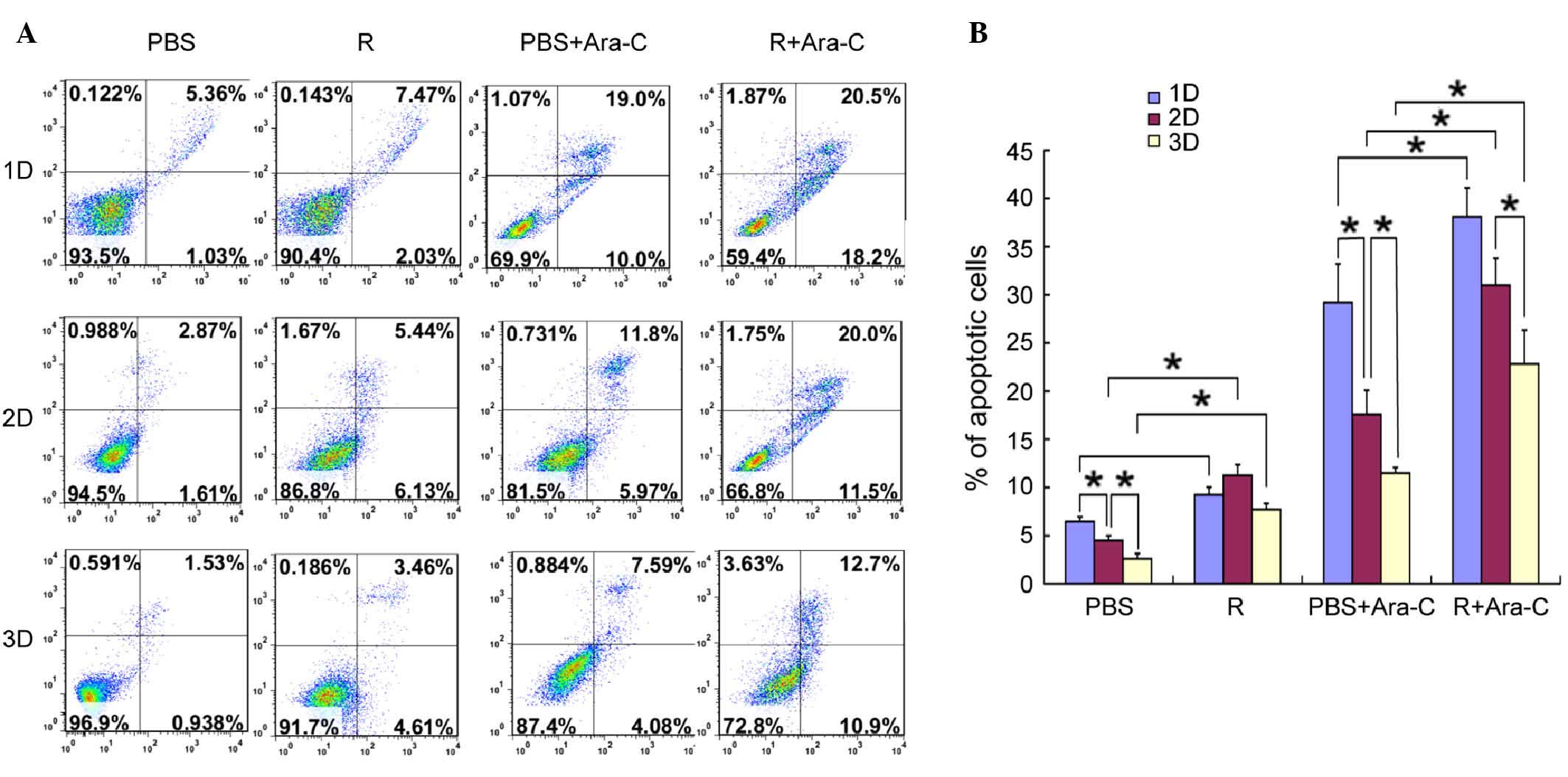|
1
|
Schofield R: The relationship between the
spleen colony-forming cell and the haemopoietic stem cell. Blood
Cell. 4:7–25. 1978.
|
|
2
|
Saito Y, Kitamura H, Hijikata A,
Tomizawa-Murasawa M, Tanaka S, Takagi S, Uchida N, Suzuki N, Sone
A, Najima Y, et al: Identification of therapeutic targets for
quiescent, chemotherapy-resistant human leukemia stem cells. Sci
Transl Med. 2:17ra92010. View Article : Google Scholar : PubMed/NCBI
|
|
3
|
Lane SW, Scadden DT and Gilliland DG: The
leukemic stem cell niche: Current concepts and therapeutic
opportunities. Blood. 114:1150–1157. 2009. View Article : Google Scholar : PubMed/NCBI
|
|
4
|
Bissell MJ, Rizki A and Mian IS: Tissue
architecture: the ultimate regulator of breast epithelial function.
Curr Opin Cell Biol. 15:753–762. 2003. View Article : Google Scholar : PubMed/NCBI
|
|
5
|
Breslin S and O'Driscoll L:
Three-dimensional cell culture: the missing link in drug discovery.
Drug Discov Today. 18:240–249. 2013. View Article : Google Scholar : PubMed/NCBI
|
|
6
|
Nilsson SK, Johnston HM, Whitty GA,
Williams B, Webb RJ, Denhardt DT, Bertoncello I, Bendall LJ,
Simmons PJ and Haylock DN: Osteopontin, a key component of the
hematopoietic stem cell niche and regulator of primitive
hematopoietic progenitor cells. Blood. 106:1232–1239. 2005.
View Article : Google Scholar : PubMed/NCBI
|
|
7
|
Kluza E, van der Schaft DW, Hautvast PA,
Mulder WJ, Mayo KH, Griffioen AW, Strijkers GJ and Nicolay K:
Synergistic targeting of alphavbeta3 integrin and galectin-1 with
heteromultivalent paramagnetic liposomes for combined MR imaging
and treatment of angiogenesis. Nano Lett. 10:52–58. 2010.
View Article : Google Scholar : PubMed/NCBI
|
|
8
|
Kassem M, Risteli L, Mosekilde L, Melsen F
and Eriksen EF: Formation of osteoblast-like cells from human
mononuclear bone marrow cultures. APMIS. 99:269–274. 1991.
View Article : Google Scholar : PubMed/NCBI
|
|
9
|
Locatelli F, Maccario R and Frassoni F:
Mesenchymal stromal cells, from indifferent spectators to principal
actors. Are we going to witness a revolution in the scenario of
allograft and immune-mediated disorders? Haematologica. 92:872–877.
2007.PubMed/NCBI
|
|
10
|
Mendez-Ferrer S, Michurina TV, Ferraro F,
Mazloom AR, Macarthur BD, Lira SA, Scadden DT, Ma'ayan A,
Enikolopov GN and Frenette PS: Mesenchymal and haematopoietic stem
cells form a unique bone marrow niche. Nature. 466:829–834. 2010.
View Article : Google Scholar : PubMed/NCBI
|
|
11
|
Eliasson P and Jönsson JI: The
hematopoietic stem cell niche: Low in oxygen but a nice place to
be. J Cell Physiol. 221:17–22. 2010. View Article : Google Scholar
|
|
12
|
Balduino A, Hurtado SP, Frazão P, Takiya
CM, Alves LM, Nasciutti LE, El-Cheikh MC and Borojevic R: Bone
marrow subendosteal microenvironment harbours functionally distinct
haemosupportive stromal cell populations. Cell Tissue Res.
319:255–266. 2005. View Article : Google Scholar : PubMed/NCBI
|
|
13
|
Visnjic D, Kalajzic Z, Rowe DW, Katavic V,
Lorenzo J and Aguila HL: Hematopoiesis is severely altered in mice
with an induced osteoblast deficiency. Blood. 103:3258–3264. 2004.
View Article : Google Scholar : PubMed/NCBI
|
|
14
|
Calvi LM, Adams GB, Weibrecht KW, Weber
JM, Olson DP, Knight MC, Martin RP, Schipani E, Divieti P,
Bringhurst FR, et al: Osteoblastic cells regulate the
haematopoietic stem cell niche. Nature. 425:842–846. 2003.
View Article : Google Scholar
|
|
15
|
Rodríguez JP, González M, Ríos S and
Cambiazo V: Cytoskeletal organization of human mesenchymal stem
cells (MSC) changes during their osteogenic differentiation. J Cell
Biochem. 93:721–731. 2004. View Article : Google Scholar : PubMed/NCBI
|
|
16
|
Paraguassú-Braga FH, Borojevic R, Bouzas
LF, Barcinski MA and Bonomo A: Bone marrow stroma inhibits
proliferation and apoptosis in leukemic cells through gap
junction-mediated cell communication. Cell Death Differ.
10:1101–1108. 2003. View Article : Google Scholar : PubMed/NCBI
|
|
17
|
Moqattash S and Lutton JD: Leukemia cells
and the cytokine network. Proc Soc Exp Biol Med. 219:8–27. 1998.
View Article : Google Scholar : PubMed/NCBI
|
|
18
|
Meads MB, Hazlehurst LA and Dalton WS: The
bone marrow microenvironment as a tumor sanctuary and contributor
to drug resistance. Clin Cancer Res. 14:2519–2526. 2008. View Article : Google Scholar : PubMed/NCBI
|
|
19
|
Tabe Y, Konopleva M, Munsell MF, Marini
FC, Zompetta C, McQueen T, Tsao T, Zhao S, Pierce S, Igari J, et
al: PML-RARalpha is associated with leptin-receptor induction: The
role of mesenchymal stem cell-derived adipocytes in APL cell
survival. Blood. 103:1815–1822. 2004. View Article : Google Scholar : PubMed/NCBI
|
|
20
|
Hijiya N, Setoguchi M, Matsuura K, Higuchi
Y, Akizuki S and Yamamoto S: Cloning and characterization on of the
human osteopontin gene and its promoter. Biochem J. 303:255–262.
1994. View Article : Google Scholar : PubMed/NCBI
|
|
21
|
Lee CY, Tien HF, Hou HA, Chou WC and Lin
LI: Marrow osteopontin level as a prognostic factor in acute
myeloid leukemia. Br J Haematol. 141:736–739. 2008. View Article : Google Scholar : PubMed/NCBI
|
|
22
|
Nilsson SK, Johnston HM, Whitty GA,
Williams B, Webb RJ, Denhardt DT, Bertoncello I, Bendall LJ,
Simmons PJ and Haylock DN: Osteopontin, a key component of the
hematopoietic stem cell niche and regulator of primitive
hematopoietic progentior cells. Blood. 106:1232–1239. 2005.
View Article : Google Scholar : PubMed/NCBI
|
|
23
|
Haylock DN and Nilsson SK: Osteopontin: A
bridge between bone and blood. Br J Haematol. 134:467–474. 2006.
View Article : Google Scholar : PubMed/NCBI
|
|
24
|
Courter D, Cao H, Kwok S, Kong C, Banh A,
Kuo P, Bouley DM, Vice C, Brustugun OT, Denko NC, et al: The RGD
domain of human osteopontin promotes tumor growth and metastasis
through activation of survival pathways. PLoS One. 5:e96332010.
View Article : Google Scholar : PubMed/NCBI
|
|
25
|
Mitjans F, Meyer T, Fittschen C, Goodman
S, Jonczyk A, Marshall JF, Reyes G and Piulats J: In vivo therapy
of malignant melanoma by means of antagonists of alphav integrins.
Int J Cancer. 87:716–723. 2000. View Article : Google Scholar : PubMed/NCBI
|


















